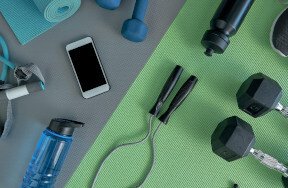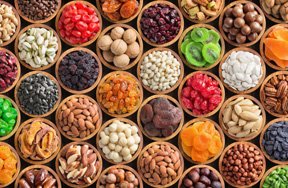10 Fitness Myths That Need to Go Away!
What you need to know about exercise and getting in shape.
Feb 12, 2021Some fitness myths can’t seem to go away or escape confusion. That’s because the answers often depend on various factors and because everyone’s minds and bodies are different and unique. And the myths spread faster than the facts, and are sometimes used incorrectly by the fitness industry to sell products. It can be hard to figure out what claims are myths, so let’s disassemble some of them!
 Do you know fact from fiction when it comes to getting fit?Courtesy of Secureteen.com
Do you know fact from fiction when it comes to getting fit?Courtesy of Secureteen.com
Myth #1: The more you sweat, the more fat/calories you’re burning.
While you may have worked super-duper hard during a workout, how sticky you are afterwards has little to do with it. Do you lose weight when you sweat? Yes, but it’s water. As soon as you rehydrate your weight bounces back up. Similarly, excessive weight loss at the beginning of a new diet results from water loss, not fat loss. Everyone sweats differently, and the amount depends on things like genetics, type of exercise, fitness level, weather conditions, age and gender.
Myth #2: Cardio is the best exercise for getting fit.
You will, in most cases, burn more calories while doing cardio for 30 minutes than while strength training. But cardio alone is not necessarily the quickest way to get fit. Strength training, paired with cardio (and healthy eating), will get you where you really want to be. If you want to look better, feel better, do more, and live longer, no way should you ignore strength training. It increases the amount of muscle in your body, and the more muscle you have, the higher your metabolism, and the healthier you are.
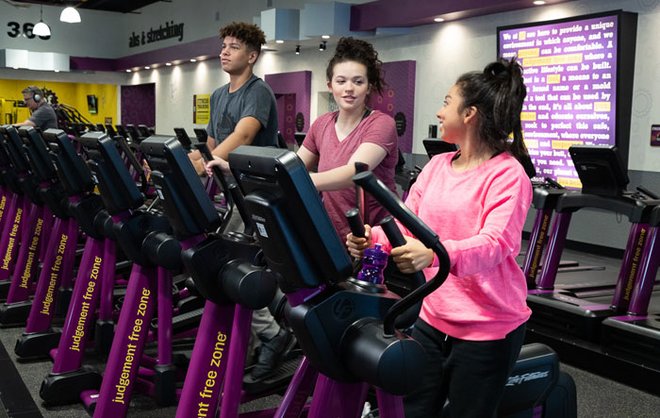 Cardio paired with strength training is the most effective way to get fit.Courtesy of Planetfitness.com
Cardio paired with strength training is the most effective way to get fit.Courtesy of Planetfitness.com
Myth #3: If you exercise, you can eat more junk food.
Exercise is a wonderful way to get fit, in conjunction with eating well. But don’t assume that just because you’ve started exercising, excess calories will automatically, effortlessly burn off you. The unfortunate truth is, for most people, exercise cannot keep up with a poor diet.
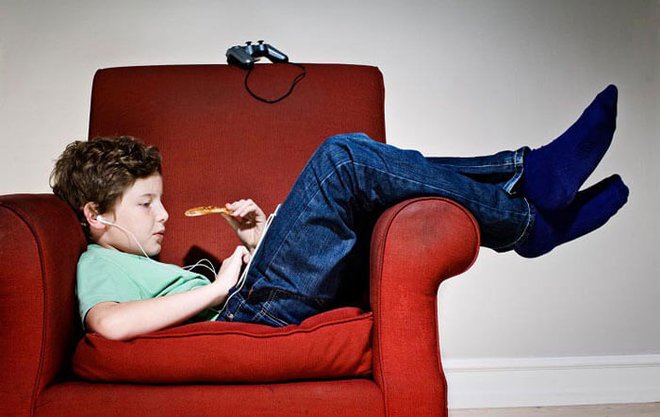 Using exercise to offset unhealthy eating habits doesn't work. Courtesy of Ehealth.org
Using exercise to offset unhealthy eating habits doesn't work. Courtesy of Ehealth.org
Myth #4: You have to feel pain to achieve the results you want.
Exercise should be both enjoyable and uncomfortable. It’s fickle like that. It needs to be enjoyable enough that you keep coming back for more, but it also needs to get you working hard enough to actually be called a workout. Learn to recognize the difference between that and pain—Which is your body’s protective mechanism. “No pain, no gain” isn’t a helpful slogan. Pain doesn’t care to be ignored, and if it is, it will most likely respond with long-term problems like chronic injury.
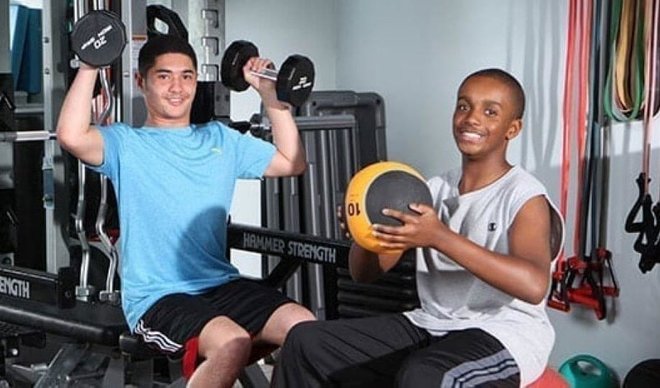 Exercise should be enjoyable! Work out with a friend.Courtesy of Yourteenmag.com
Exercise should be enjoyable! Work out with a friend.Courtesy of Yourteenmag.com
Myth #5: If you gain weight, you must be getting fat.
You’re eating healthy and exercising consistently, but the scale is moving in the wrong direction—eek! But if you’re trying to burn fat and add muscle, the muscle weight you add may temporarily be more than the fat you’re burning. Don’t count on the scale to be your bestie during the process. Don’t measure your success by your weight loss. Scales don’t measure how firm you look in the mirror or how many inches you’ve whittled from your waist.
Myth #6: Being slim means you’re healthy.
A skinny person may have a high amount of visceral fat, or belly fat, stored around their organs. This “bad” type of fat is genetically different and deadlier than subcutaneous fat and is linked to heart disease and cancer. Studies suggest that weight alone cannot determine someone’s level of fitness. You need exercise to maintain good muscle mass, and thus good metabolic health. Don’t follow a super-restrictive diet, lose weight, and think as a couch potato that you’re going to be healthy. The science tells us that fitness is not skin deep.
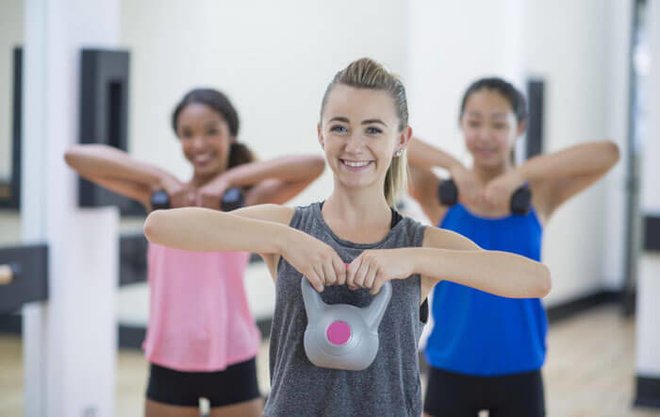 Girls and women do not have the genetic makeup to bulk up through weight lifting.Courtesy of Medicalnewstoday.com
Girls and women do not have the genetic makeup to bulk up through weight lifting.Courtesy of Medicalnewstoday.com
Myth #7: You only need to work out one or two times a week.
It would be nice, especially when we’re particularly busy, for this to be true. Exercise scientists maintain that you need to work out a minimum of 3 days/week to maintain health benefits. That being said, they also recommend a daily active lifestyle regardless of what your fitness level is.
Myth #8: You can build “long, lean muscle” by doing certain exercises so you won’t bulk up.
This is a marketing ploy repeated even by some fitness instructors and the like, targeted toward women who shy away from strength training. Bulky muscle vs. lean muscle isn’t a thing. Muscle is muscle, and all of it’s lean. And no, weight-lifting won’t make girls bulk up!
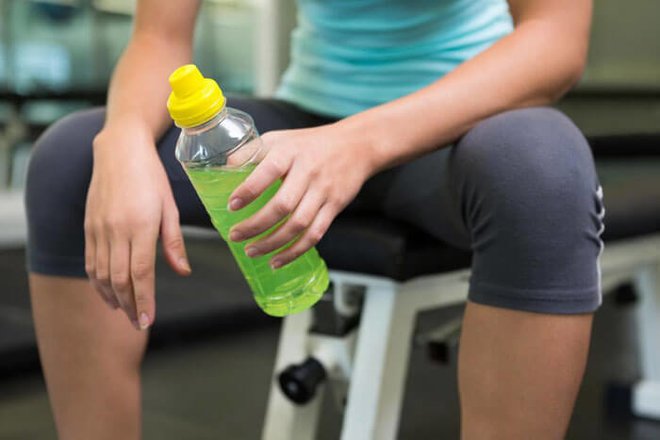 Gatorade is designed for endurance exercise, so stick with water.Courtesy of Medicalnewstoday.com
Gatorade is designed for endurance exercise, so stick with water.Courtesy of Medicalnewstoday.com
Myth #9: Sit-ups/crunches are best to get a flat stomach.
Moves that work multiple muscle groups, like for instance the plank, are the best, most efficient core exercises. But two other factors come into play when it comes to whittling away your midsection—Cardio and diet. That’s because in order to see the muscles you’ve been toning, you have to burn the fat surrounding it. So, eat healthy and do moves to get your heart rate up as well.
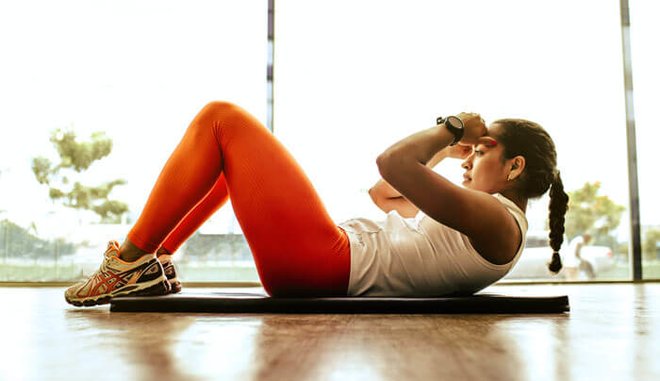 Courtesy of Jonathan Borba on Unsplash
Courtesy of Jonathan Borba on Unsplash
Myth #10: Sports drinks are the best way to rehydrate after a workout.
If you’re exercising for under an hour, choose water. Stuff like Gatorade is loaded with sugar (i.e., empty calories) and minerals you don’t need unless you’re exercising for more than an hour or running long distances. It was developed so that athletes can replace carbohydrates and electrolytes, using sodium and potassium, to improve performance.
One last rule of thumb: Extremes are a red flag. A trend that tells you to always or never do something should give you pause. And above all, make sure your exercise regimen feels enjoyable to you by mixing it up and including lots of variety. That way you’ll stick to it and hopefully continue to do it well into the future!
































